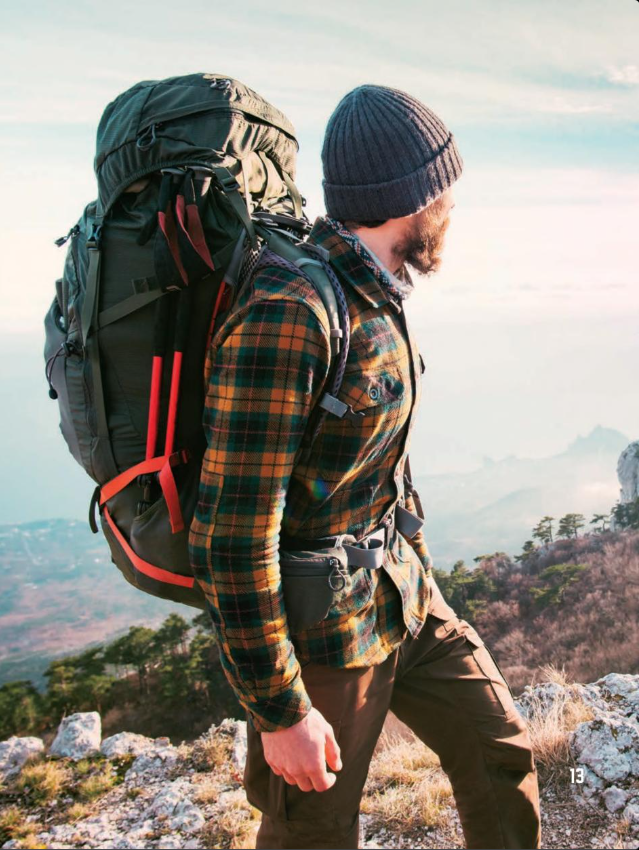Some sports require a special kind of clothing or uniform, but not hiking. Many hikers already have most of the clothes needed for hiking.
Some hikers recommend dressing like an onion. When an onion is peeled, it reveals multiple, thin layers underneath. So dressing like an onion means wearing thin layers of clothes. Those thin layers help keep a hiker comfortable in warm or cool weather. The layers dry quickly when a hiker gets damp from rain or sweat. And with thin layers of clothes, a hiker can add or remove layers as needed as temperatures rise or fall.
Hikers usually wear long pants or heavy tights to keep their legs from getting scratched in the woods.
Also, jeans or heavy cotton clothes are not the best choice for hiking. These clothes are very uncomfortable if they get wet. They hold the moisture close to the skin.
Many hikers prefer wool clothes. Wool and wool blends have the reputation of being scratchy, but they also can be soft. They do a great job of holding in body heat, even when the fabric gets wet. Another option for hikers is workout gear. Clothing made for sports or active wear is usually moisture wicking. It does a good job of allowing moisture to evaporate off of skin.
Fleece provides warmth and protection from the wind. Long sleeves that roll up are a good choice. They protect hikers from cool temperatures and sunburn. A hat keeps a hiker’s head warm. Hats with brims, such as a baseball cap or a wide-brimmed hat, also provide good sun protection.
STEP SMARTLY
The average person takes approximately 2,000 steps to walk one mile (1.6 km). So a hiker’s shoes or boots and socks are important. Sneakers or trail-running shoes work well. Hiking more difficult, longer, or wet trails might require hiking boots or hiking shoes. These give better support for the ankles and feet. Shoes or boots need to fit well so they do not rub against the feet and cause blisters. Hikers’ shoes should keep their feet dry and provide a good grip for walking the trail. And they should be lightweight. Hiking gives the legs and feet enough of a workout. There is no need to add a heavy pair of shoes into the mix.
Socks that are wool, wool blend, or synthetic are best for hiking. They help keep a hiker’s feet dry, which helps prevent blisters. Cotton socks hold moisture close to the feet. This can lead to rubbing and blisters.
PASS THE SUNSCREEN





No comments:
Post a Comment